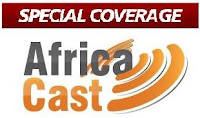Digital terrestrial television (DTT) is going to create a profusion of choices for South African audiences. Despite this, the South African public broadcaster is absolutely resolute that amidst the explosion of new TV channel choices available, the SABC will have to maintain and retain its viewership lead in the country.
The South African public broadcaster currently boasts the largest overall audience share but although overall TV viewership in South Africa has grown the past decade spurred on by pay TV competition and growing TV choices, the SABC's combined viewership for its three TV channels have posted a slight decline the past few years due to increased audience fragmentation and other factors. Yet the SABC still commands a total weekly TV viewership of 29,3 million viewers per week for SABC1, SABC2 and SABC3 combined.
''There will be endless choices for consumers and South African viewers from broadcasters as well as from the SABC if you look at what DTT is going to offer, but those numbers will have to be maintained,'' said Gelfand Kausiyo, the SABC's general manager for broadcast fascilities. He was speaking at the AfricaCast 2011 TV summit in Cape Town which is part of the 14th AfricaCom conference.
''Content is king. The more content you've got, the better you can manage that content widely with the [bigger] number of channels you've got - and the better is you're chance that you're likely to maintain that number of viewers, or better,'' said Gelfand Kausiyo.
''There will be no more scheduling interruptions of big sport events which currently there are. The problem is that the whole country goes absolutely babanas when we can't broadcast a [soccer] match live. It's challenging because we have to move programmes. In the DTT world there will be no more of that. A dedicated sport channel will mean no more delayed broadcasting. These are some of the benefits that accompany the digital television environment we're entering.''
''DTT will make it possible for the SABC to stay relevant and compete more effectively,'' Gelfand Kausiyo said. ''This has been a challenge for the public broadcaster: the problem of actually trying to satisfy 29,3 million viewers with three TV channels.''
